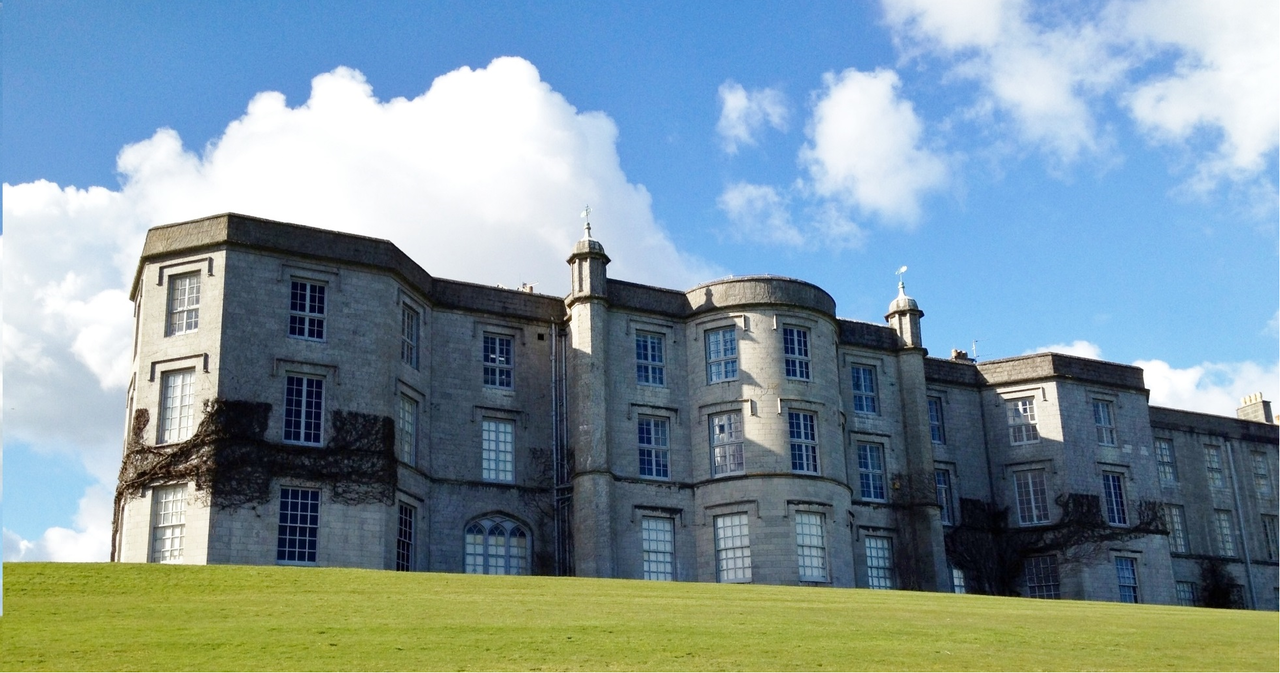One thing that I often notice is how many paintings are to be found within the Arcade. They come in all shapes and sizes and most are very interesting to study. Yesterday when I was in the Arcade, I noticed a work by the now almost forgotten Lady Victoria Manners. To be truthful, although I am very interested in art history, I cannot say that I had really heard of Lady Victoria. The work was a careful study of the garden and her house Plas Newydd which is situated on the north bank of the Menai Strait in Llanddaniel Fab in Anglesey. I had heard of the house when swotting up on National Trust properties but until yesterday, I had not realised that Lady Victoria had lived there. Plas Newydd also had connections with Rex Whistler (1905-1944), an artist that I greatly admire who as with Eric Ravilious (1903- 1942), died tragically during the Second World War.
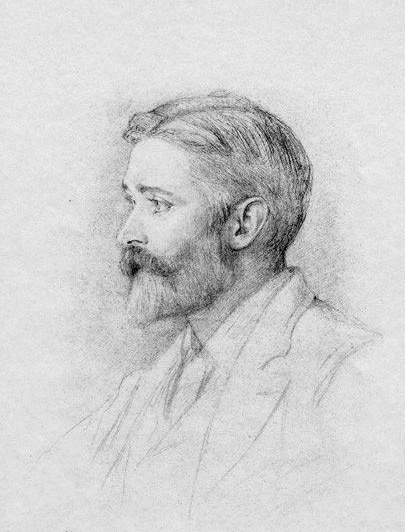
By Violet Manners, Duchess of Rutland (1856-1937) [Public domain], via Wikimedia Commons
Lady Victoria was born on the 20th December 1883 and was the eldest daughter of Henry Manners the 8th Duke of Rutland (1852-1925) and his wife Violet Manners the Duchess of Rutland (1856-1937) who was a noted artist and sculptor. One of Lady Victoria’s sisters was the much remembered Lady Diana Cooper (1892-1986) whose life has been the subject of a couple of recent books. As with her mother (who was painted by Watts and other artists) and her sister Diana, she was a noted beauty and moved easily within her aristocratic circles.
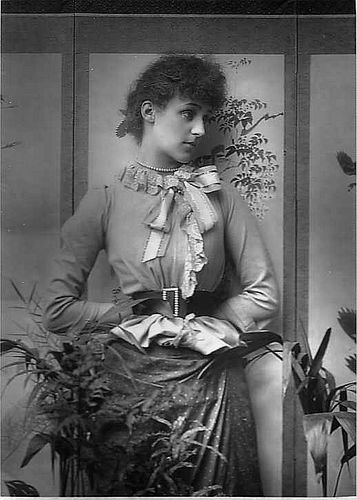
Portrait of Violet Manners by Herbert Rose Barraud
Looking at the painting of Plas Newydd, Lady Victoria certainly inherited some of her mother’s artistic talent (her mother had exhibited at the RA and at the famous New Gallery in Regent Street which existed there between 1888 and 1910). If you are interested, the building that once housed The New Gallery is now the large Burberry store in Regent Street.
But let’s get back to Lady Victoria who although a gifted artist, is better known for her writings on art and her work as an illustrator. In the 1920s, she co-wrote with G.C.Williamson (the noted art historian), studies of both Johan Zoffany (1733-1810) and Angelica Kauffman (1741-1807).
The fine study of Zoffany was seen as the first in-depth study of the German born artist whilst her work on Angelica Kauffman, was set in motion when manuscripts written by the artist were discovered in the RA archives. This discovery and the study in general helped to identify what was Kauffman’s work and what was not.
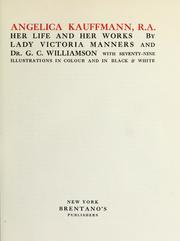 She also wrote a study of William Peters (1742-1814) an almost forgotten English artist who later became an Anglican clergyman and chaplain to King George the Fourth. Peters had been quite well known for some of his early erotic works, a fact that he later regretted during his time in the church. He was an interesting artist who I first came across when I was at college and is well worth looking up.
She also wrote a study of William Peters (1742-1814) an almost forgotten English artist who later became an Anglican clergyman and chaplain to King George the Fourth. Peters had been quite well known for some of his early erotic works, a fact that he later regretted during his time in the church. He was an interesting artist who I first came across when I was at college and is well worth looking up.
Lady Victoria also wrote articles for The Connoisseur, a fine arts magazine which only ceased publication twenty-five years ago (I remember this magazine well). She was also involved in illustrating Alicia Amherst’s London Parks and Gardens during the first decade of the century. A fact that did surprise me during my researches is that both the studies on Kauffman and Zoffany are easily available on line should you want to read them.
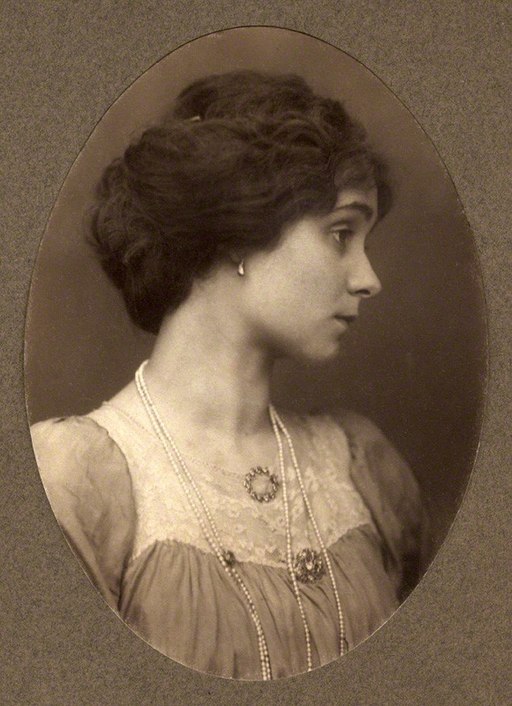
Victoria_Marjorie_Harriet_Paget_(née_Manners),_Marchioness_of_Anglesey_by_George_Charles_Beresford_(1900s) George Charles Beresford [Public domain], via Wikimedia Commons
The connection with Anglesey and from that, the subject of the painting that I am about to discuss, came through her marriage in 1912 to Charles Paget the 6th Marquess of Anglesey (1885-1947). Initially they lived in Staffordshire, but in 1920 moved to Plas Newydd and later the 6th Marquess commissioned Rex Whistler to undertake the now famous murals in the house. Whistler also completed a number of Trompe l’oeil paintings as well as portraits and a life study of Lady Victoria’s daughter, Lady Caroline Paget (1913-1973). It appears that Rex fell in love with Lady Caroline during his time at Plas Newydd although she later married someone else much to the artists
dismay.
I am led to believe that some of these paintings are part of a permanent exhibition of Rex Whistler’s work and ephemera at Plas Newydd. If this is the case, I will try to visit the house when I am again in North Wales. The panting which was recently for sale at

Rex Whistler [Public domain], via Wikimedia Commons
the Arcade is a watercolour which was painted between 1920 and 1946 and shows part of the fine gardens and the house at Plas Newydd. It appears to have been painted in the late afternoon of a summer’s day as the shadows are long on the grass and the roses are in full bloom. It is a luxurious study of high summer and of Lady Victoria’s much loved house and in my view is one of the more interesting paintings to have arrived in the Arcade recently. As with a great number of the paintings, etchings and drawings, I found it in the organised chaos of the Junk Shop. This unit can be found in the right hand passage and is the only unit with a basement (do visit it as there is so much to see). If Lady Victoria’s work is no longer there when you next visit then there are a host of fine framed works to look at and maybe buy.
On occasions. I have seen works which I have thought might have been completed by an artist of note, but by the time I have researched the artist the work has usually been sold.
Common sense denotes that you are not going to find a painting that you are going to retire with, but there are so many artists whose work will occasionally show up in places such as the Arcade. This is the fun of looking at paintings and the like, you are never sure what you are likely to find. And one must remember that not all the works by Richard Dadd are accounted for.
